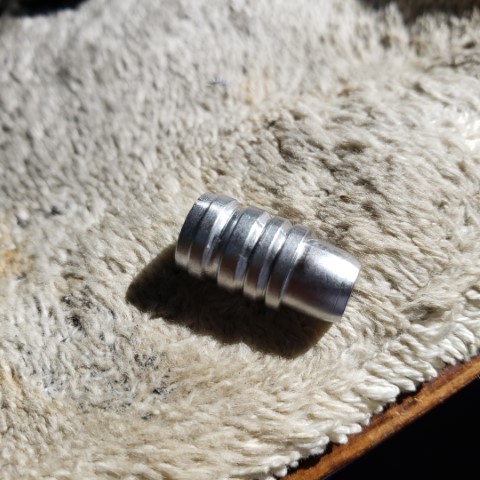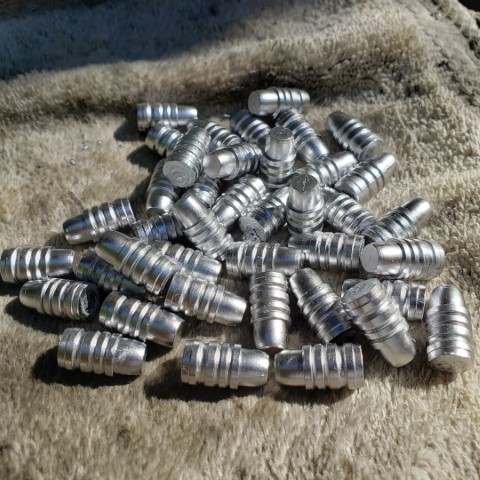I don't shoot a lot of " full tilt " 357 Magnums.
When I do, this is a good one to use.
The Ray Thompson, 358156 , gas check.
Superbly accurate. Easy to cast with.
Gas check shanks are the correct dia.
The bands are nice and round at .360 as the bullets fall from the mould with ACWW's.
A bit slow if you're accustomed to using a 6 cav. mould.
But, like I said, I don't use a lot of these.
This one was always one of Skeeter's favorite cast bullets.
I'd like to know how old this mould is ? ?
I wonder what the guy that made this mould was being paid per hour.
Ben



When I do, this is a good one to use.
The Ray Thompson, 358156 , gas check.
Superbly accurate. Easy to cast with.
Gas check shanks are the correct dia.
The bands are nice and round at .360 as the bullets fall from the mould with ACWW's.
A bit slow if you're accustomed to using a 6 cav. mould.
But, like I said, I don't use a lot of these.
This one was always one of Skeeter's favorite cast bullets.
I'd like to know how old this mould is ? ?
I wonder what the guy that made this mould was being paid per hour.
Ben



Last edited:
